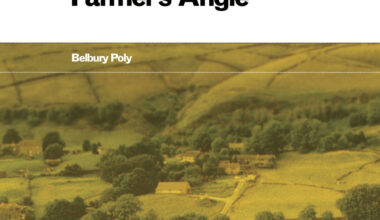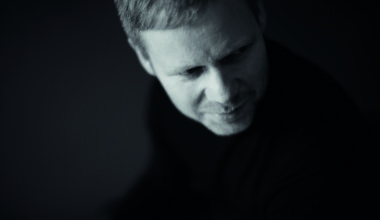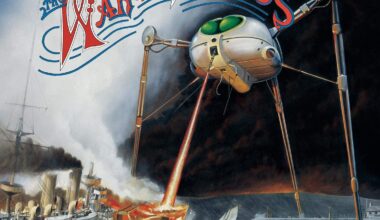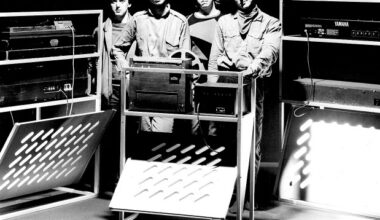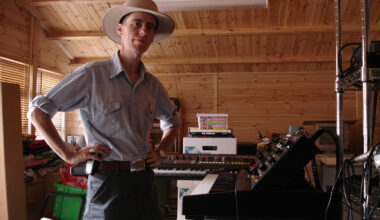A tune that hits the spot like few others, ‘Chime’ by Orbital is a genre defining classic if ever there was one. Paul Hartnoll tells us how it was recorded in a cupboard under the stairs

“My dance music mentor was Jazzy M who ran his own record shop called Oh-Zone. He used to give me free records and say, ‘Here, do something like this’ so I’d done loads of music before ‘Chime’. Jazzy was curating a compilation with Pete Tong and got my first tracks in front of him. Two tracks were on ‘The House Sound Of London – Vol IV’ when I was using the name DS Building Contractors. We only came up with the name Orbital when we needed a better name for the ‘Chime’ white label.
“We’d been through acid house, the 303 was settling into the general landscape and Detroit techno was the new kid on the block and I thought the production on those records was no better than my own with my four-track. It was kind of quirky and slightly out of tune and there were hardly any effects. They were also using the same equipment as me. I could hear the Korg Poly-800, the 909 and the 303. Those tools were creating a sound among themselves. So Detroit techno would definitely be the biggest influence on ‘Chime’.
“Around that time all my kit all got stolen in a burglary at our house. ‘Chime’ wouldn’t have happened without that, because we bought our first Akai sampler with the insurance, and the main sound on ‘Chime’ was done on that. My life would have turned out completely different without that burglary. The main riff on ‘Chime’ was built from a sample from one of my dad’s old LPs. If you listen to the hidden track on the first Orbital album, the source sample is laid out there as a loop. Nobody ever spots it and nobody does anything with it, but it’s there.
“Where the other big riff comes from I couldn’t tell you now. It’s just another random sample from my dad’s LPs. The same with the whiny string sound, that’s a sample backwards. But I wasn’t using samples in the sense of the traditional loop-based track like in hip hop. I was using the sampler as an oscillator, sampling a section and then making my own melody by playing that sampled sound.
“‘Chime’ wasn’t recorded in a studio because we didn’t have a studio! My mum and dad ran a pub at that point in Sevenoaks, so I’d often set up the gear in our living room while they were out. We did have a sort of studio, but it was the office that my parents put under the stairs. They took the wall out, so I wasn’t literally in a cupboard, but that’s where ‘Chime’ was recorded. I call it the Harry Potter studio. I turned into a keyboard wizard! I guess Jazzy M was my Hagrid, Pete Tong was Dumbledore, and that makes Phil Ron Weasley. Phil was mostly in London at that point with a new child. He’d come down as we’d started to work together more, but ‘Chime’ was something that just happened while I was on my own. There’s a picture from the Sevenoaks Chronicle when ‘Chime’ got us on ‘Top Of The Pops’, and you can see all the gear set up in the cupboard-under-the-stairs studio.
“‘Chime’ is quite a busy track, and there’s a reason for that. I got home from the pizza restaurant where I worked at the time, I’d had my tea, and I was going out with my mates. They’d come round to my parents’ house, everyone would get stoned and we’d go to the pub. In that dead time before people arrived, I wanted to try something out that I’d been thinking about while I’d been at work.
“I had a six-input Yamaha four-track machine, which was a replacement for the Tascam one that got stolen. I thought if I used all six inputs I could have six different sounds, mute and unmute them, and basically do a six-track recording. I created six parts where I’d normally do four – two drum machine patterns, a 303, a Yamaha DX100 bassline, the three samples from my dad’s LPs, once with and once without a delay. I also wrote an extra section that reminded me of the Beethoven-y music that used to be broadcast on the radio. It was really creepy, but it was supposed to signify peace.
“By the time I got to writing what would become ‘Chime’, my mates started arriving and getting stoned. They were impatient about getting to the pub while I was trying to record the track. I got to the bit that’s now the middle of the song, and that’s how I originally ended it. I turned around and they were saying, ‘For fuck’s sake, let’s go!’.There was just one friend, who looked particularly stoned on the end of the sofa, who said, ‘That’s pretty good’. He was the only one! Everyone else was walking out the door to go to the pub because I’d made them late. He was a proper psychedelic hippy guy, which probably points to why we slotted in with people like the Megadog more than the general dance crowd. Obviously there’s something of the Kentish Canterbury psychedelia in Sevenoaks.
“We got a £2,000 advance for ‘Chime’, which was enormous. I could have lived a fucking year on that money! For me, dance music was the last proper revolutionary youth movement in the history of rock ’n’ roll, and I don’t think there’s another one coming. We didn’t even know it was a thing, even when ‘Chime’ got into the Top 20. I remember thinking that it was like a youth movement without an image. And now of course if you look at videos of early 90s rave, you realise it did have a look and it’s not one I’d care to relive!”
For more, see orbitalofficial.com

